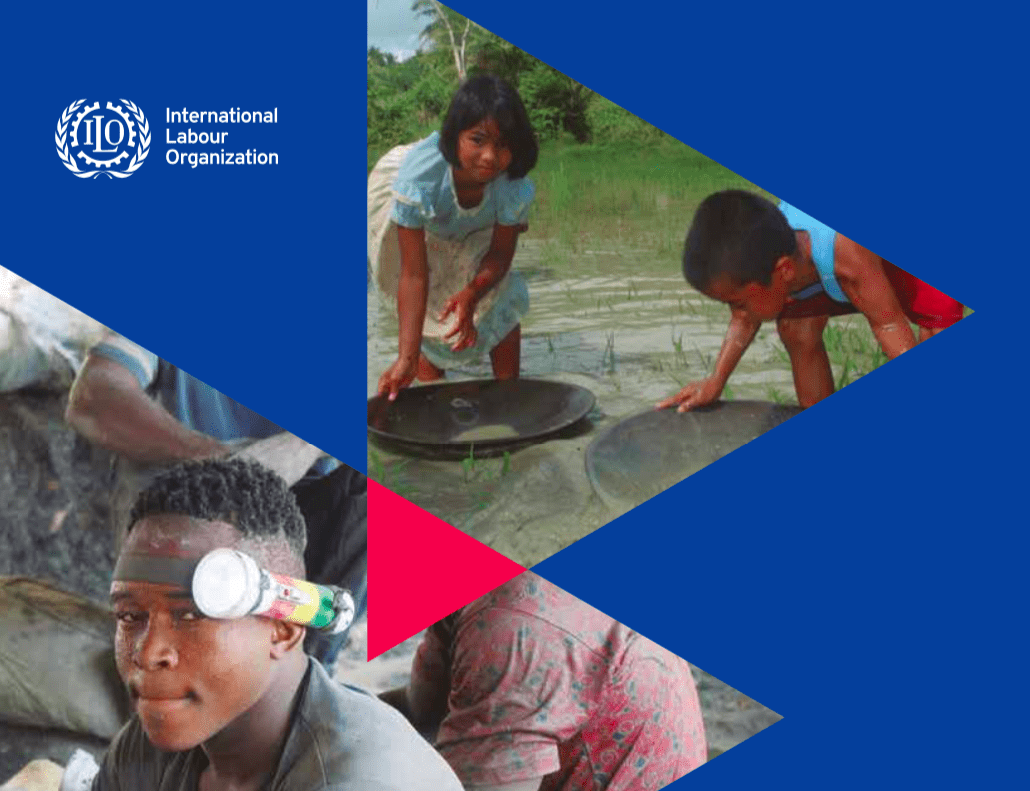
Mapping interventions addressing child labour and working conditions in artisanal mineral supply chains
Executive Summary
At the request of the International Labour Organization (ILO), Levin Sources conducted this mapping (mainly desk research) of interventions (projects and initiatives) to address child labour and poor working conditions (either directly or indirectly) in the artisanal and small- scale mining (ASM) sector across different minerals. It included both existing and completed projects funded primarily by international donors. The study did not include programmes funded and implemented by governments or the private sector. It was conducted before the outbreak of COVID-19. Consequently, the research did not assess the negative impact of the pandemic on child labour in the ASM sector.
As the desk research progressed, it became clear that the research would benefit from a number of interviews, which were carried out with those organizations that responded to our invitation. Some of the projects and initiatives analysed are implemented by the ILO, however other organizations and/or multi- stakeholder platforms were also reviewed to ensure the broader picture could be captured. This research outlines lessons learned and gaps from existing interventions. Its preliminary findings were presented at the Inter-Regional Knowledge Sharing Meeting on Child Labour and Working Conditions in ASGM organized by the ILO in Manila, Philippines from 28-30 May 2019, where 50 experts from 10 countries met to discuss progress and take stock of their respective experiences in addressing child labour.1 The report presented here has been enhanced by the outcome and recommendations of the meeting in Manila.
This research found nine main areas of work taken by organizations and initiatives to address child labour and poor working conditions in ASM. These include: 1) area-based work (child labour free zones); 2) social dialogue and information sharing; 3) inclusive and equitable quality education and awareness raising; 4) legislation, industry standards, guidelines, toolkits, multi-stakeholder initiatives, and promotion of best
practices, including formalization and traceability; 5) human rights, gender, community and family-based work; 6) research, monitoring, baseline and perception studies; 7) investment and funding; 8) technical advisory and advocacy, capacity building and technical support to improve productivity, working conditions, decontamination of lands, etc.; and 9) decent work for adults and youth, and social protection systems, including nutrition and health programmes.
The interventions analysed face many challenges when it comes to education, monitoring, regulation, formalization, due diligence and governance, cultural challenges, livelihood alternatives, poverty and development, widespread activities in vast locations, lack of funding and short timeframes, state fragility, instability and external shocks, and engagement challenges.
The main gaps identified from the interviews and various readings are related to data and knowledge gaps, and lack of information sharing, monitoring strategies, resources, funding and clear leadership to implement the agenda. As such, it is recommended that measures are put in place to foster greater collaboration and knowledge sharing, to make a concerted effort to collect and share only quality information, to analyse ways to raise awareness of the importance of integrated approaches that address all nine identified areas of work to tackle child labour, and to create a cross-mineral and multi-sector round table. It is also recommended to work with practitioners to create enabling conditions to ensure compliance with the ILO Conventions and Definitions on child labour as well as national labour laws. The ILO defines child labour as “work that deprives children of their childhood, their potential and their dignity, and that is harmful to physical and mental development”.
Introduction
This mapping research aims to provide a high-level review of interventions (projects and initiatives) that aim to address child labour and poor working conditions (either directly or indirectly) in the Artisanal and Small-scale Mining (ASM) sector across different minerals. ASM refers to mining activities which are normally typified as formal, informal or illegal mining operations. Artisanal mining uses predominantly rudimentary technologies, whereas small-scale mining can be mechanized, or semi-mechanized, and/or have a greater degree of capitalization. Together, we call these two activities ASM.
Worldwide, it is estimated that there are 40 million people working in ASM across 80 countries, with 150 million people depending on ASM practices, including family members of the ASM miners and the broader ASM community. Artisanal miners are responsible for 20 percent of the global supply chain of gold and diamonds, 80 percent of the global sapphire supply chain, 26 per cent of the global tantalum supply chain, and 25 percent of global tin production.4
It is difficult to estimate the total number of children working in mines due to the challenges in data gathering. Data gathering is challenging because of the informal nature of the sector and the lack of common understanding from stakeholders on what represents child labour as per the ILO Conventions on child labour. In many of these countries, more than 70 per cent of ASM operators are informal or illegal, and informality not only leads to negative environmental and social impacts, but it also leads to secrecy, making it more difficult to monitor and assess the number of children working in mines. Data gaps limits the duty bearers’ capacity to address the needs of children in child labour, and this same absence of data hinders policy makers and service providers’ efforts to address the issue. Despite these data gaps, in 2006, the ILO estimated that about 1 million children work in ASM. Although, globally, child labour in all sectors has declined, child labour in ASM might be higher now as ASM activities have been increasing steadily since 1993. In Burkina Faso, estimates show that children constitute between 30% and 50% of the entire ASM gold mining workforce.
Children working in ASM communities engage in a wide range of tasks, from mining activities, such as digging, carrying heavy loads, grinding, sorting rocks or mixing the ground ore with mercury (in the case of gold), to providing services to miners and ASM communities, such as selling food or being involved in prostitution or trafficking.
Read full report here.
